Granada, much like Toledo, is a city defined by its history. People have called it home for over 7,000 years. Sunday morning we joined a Highlights of Granada free walking tour. Our guide took us through the labyrinthine of steep cobblestone streets in the Albaicín. It’s the old Moorish quarter with ancient whitewashed shops and houses that cascaded down the hillside. Our memories of it are vivid. On our first visit to Granada, we enjoyed several days in the heart of the quarter. We felt a sense of timelessness here.
The Albaicin offered an outstanding viewpoint of Granada’s crown jewel, the Alhambra, the sprawling Moorish fort and palace complex, and UNESCO World Heritage Site. During the Moorish era, it was a cultural and artistic marvel known as al-Andalus. We’ve visited it three times and marveled at its stunning architecture, artistry, gardens, and history. We’ll be taking another tour next week and perhaps have dinner at the Parador de Granada in the heart of the Alhambra to view it after sundown.
In the heart of old town Granada, we paused at several historic points of interest. One was the imposing Granada Cathedral,a stunning example of Renaissance architecture constructed like so many churches in Spain on top of a mosque. Adjacent to the cathedral is the 500-year-old Royal Chapel of Granada, the final resting place of King Ferdinand and Queen Isabella. The same Isabella who met the explorer Christopher Columbus in Granada and financed his historic voyage in 1492.
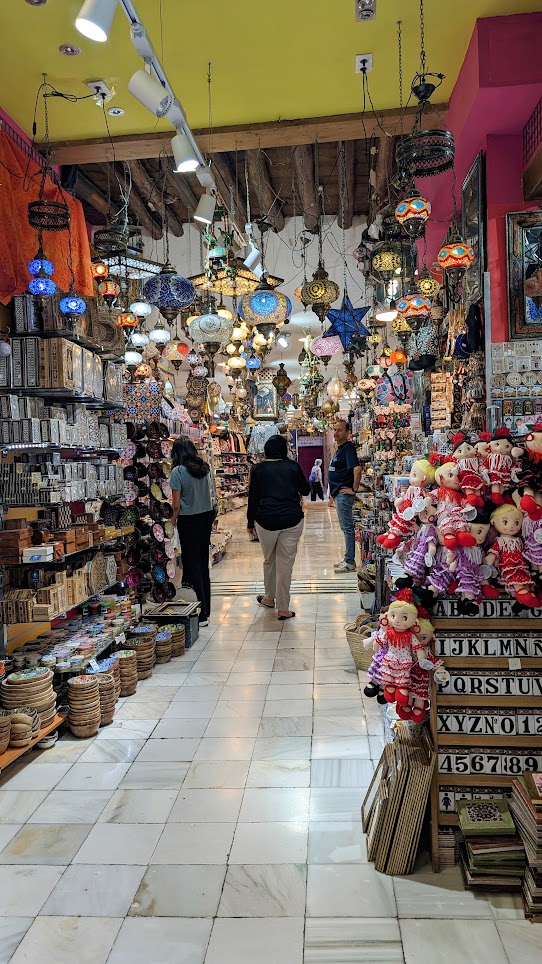
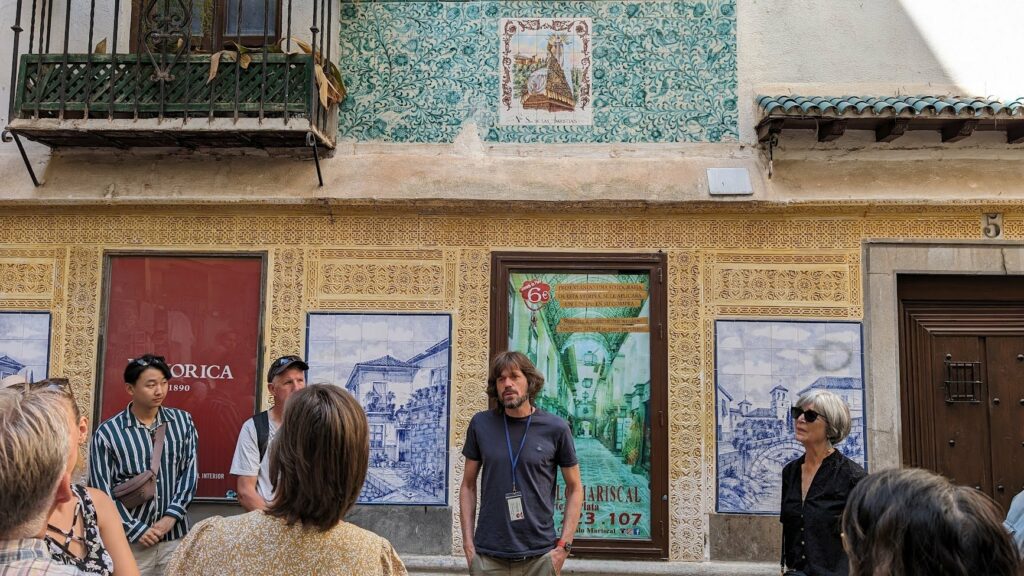

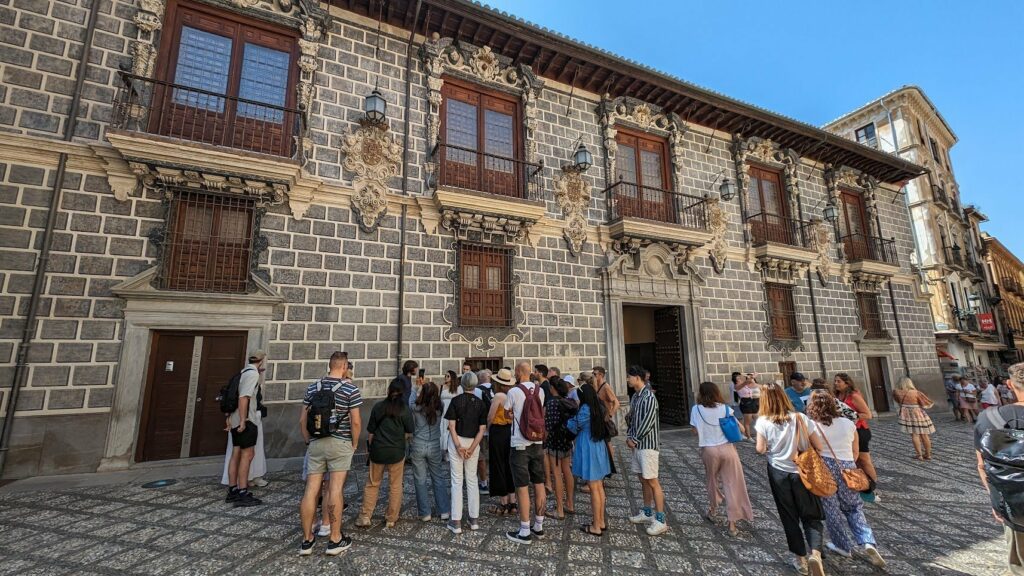
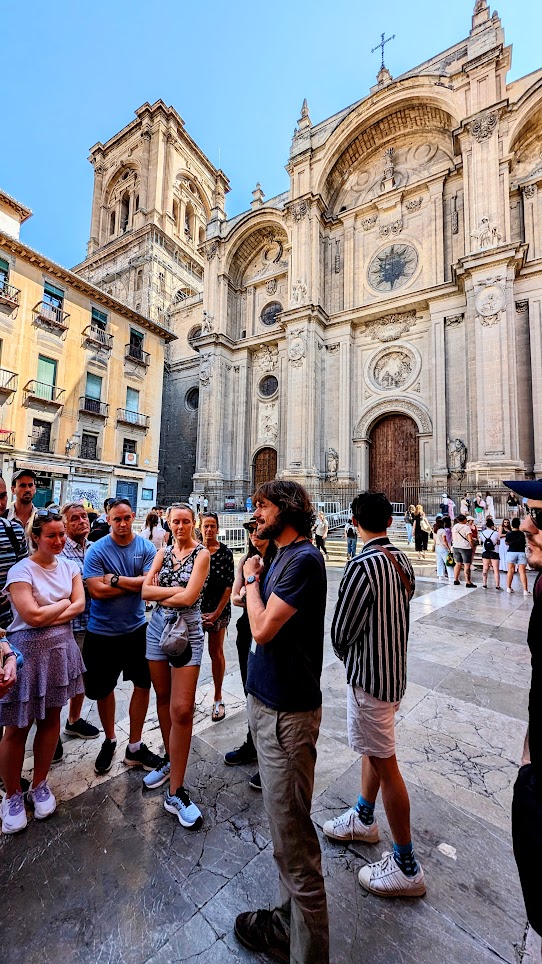
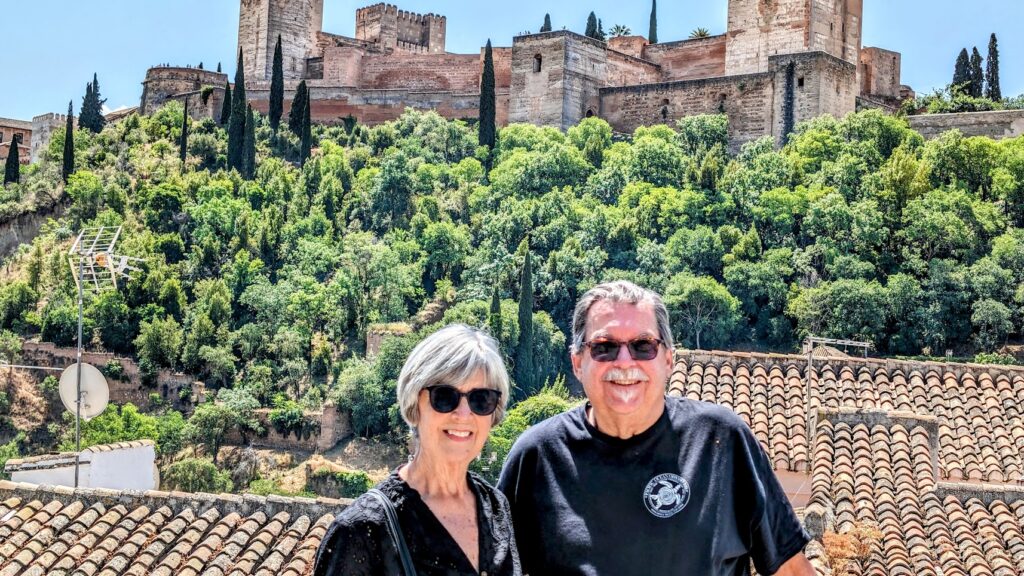
Also in 1492, Granada became the last Muslim-ruled city to fall to Ferdinand and Isabella, marking a major turning point in Spanish history. (BTW Ferdinand is my 8th cousin 16 times removed and Isabella is my second cousin, 19 times removed. I am not related to Christopher Columbus.)
One other key point of interest, also near the Granada Cathedral, is the former Moorish silk market. This warren of narrow streets was once the bustling silk bazaar during Granada’s Moorish era. Secured by nine gates and guarded at night, it housed nearly 200 shops. Although the Moorish-styled complex looks old, it’s relatively new. In 1843, the original bazaar burned down. It was soon rebuilt but never regained its importance. It’s still a bustling shopping area for spices, candy, clothing, ceramics, fans, and other souvenirs, too many of them made in China.
